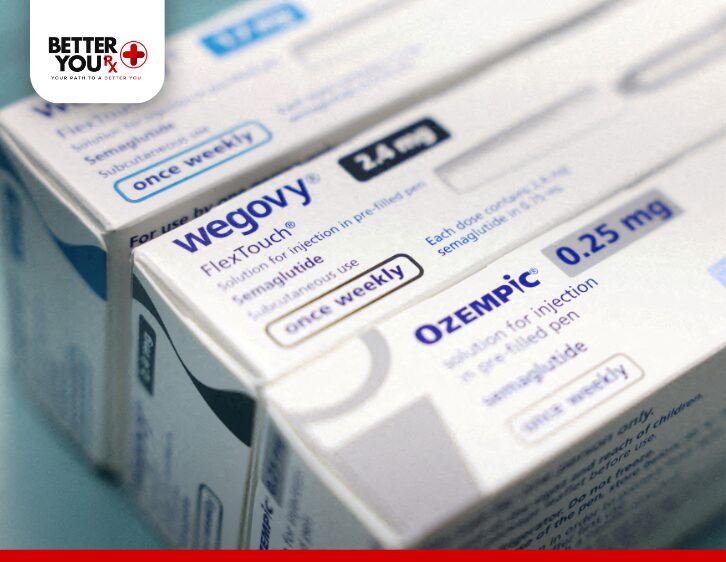Florida Employer Wellness Programs 2024
As the healthcare landscape evolves, Florida’s employers increasingly recognize the importance of comprehensive wellness programs to promote employee health and productivity. In 2024, these programs are more vital than ever, with a focus on addressing chronic diseases, mental health, and overall well-being. This article explores the current trends, benefits, and challenges of implementing effective employer wellness programs in Florida, providing insights into the best practices and strategies for maximizing employee health outcomes.
The Importance of Employer Wellness Programs
Employer wellness programs play a critical role in enhancing the health and well-being of employees. These initiatives are designed to promote healthy lifestyles, prevent chronic diseases, and reduce healthcare costs. In Florida, where chronic conditions such as heart disease, diabetes, and obesity are prevalent, wellness programs offer a proactive approach to managing health risks.

Impact on Employee Health
Wellness programs that focus on physical activity, nutrition, and preventive care can significantly improve employee health. By encouraging regular health screenings and providing resources for healthy living, employers can help reduce the incidence of chronic diseases among their workforces.
Economic Benefits
Healthier employees are more productive and less likely to require time off due to illness. By investing in wellness programs, employers can lower healthcare costs, reduce absenteeism, and increase overall productivity. The return on investment (ROI) for wellness programs is well-documented, with studies showing that every dollar spent on wellness initiatives can yield significant savings in healthcare costs.
Employee Engagement and Retention
Wellness programs can also enhance employee engagement and retention. Employees who feel that their employers care about their well-being are more likely to stay with the company and be more committed to their work. In a competitive job market, offering comprehensive wellness programs can be a key differentiator for employers.
Key Components of Successful Wellness Programs

A successful wellness program is multifaceted, addressing various aspects of health and well-being. The following components are essential for creating a comprehensive wellness program that meets the needs of Florida’s diverse workforce:
- Physical Health: Programs should include initiatives that promote physical activity, such as on-site fitness facilities, walking challenges, and gym memberships. Nutritional counseling and access to healthy meals and snacks can also support employees in maintaining a balanced diet.
- Mental Health: A vital aspect of overall wellness is maintaining good mental health. Employers should offer mental health resources, such as employee assistance programs (EAPs), counseling services, and stress management workshops. Creating a supportive work environment where mental health is openly discussed and prioritized is essential.
- Chronic Disease Management: Given the high prevalence of chronic diseases in Florida, wellness programs should include strategies for managing conditions like diabetes, hypertension, and obesity. This can involve providing education on chronic disease prevention, offering screenings, and facilitating access to medication and healthcare resources, such as those available through Better You Rx, a Canadian Pharmacy Affiliate affiliate that offers affordable options for chronic disease management.
- Preventive Care: Preventive care is the foundation of any effective wellness program. Employers should encourage regular health screenings, vaccinations, and check-ups. Offering incentives for participation in preventive care initiatives can increase employee engagement and help identify health issues early.
- Work-Life Balance: Promoting a healthy work-life balance is essential for enhancing employee well-being and overall satisfaction. Wellness programs should include policies that promote flexible work arrangements, encourage taking breaks, and provide resources for managing stress. This not only improves employee satisfaction but also contributes to better health outcomes.
Trends in Employer Wellness Programs in 2024
As we move into 2024, several trends are shaping the future of employer wellness programs in Florida. These trends reflect the changing needs of the workforce and the growing recognition of the importance of holistic health.

- Digital Health and Telemedicine: The integration of digital health tools and telemedicine into wellness programs is a major trend in 2024. Employers are increasingly leveraging technology to provide employees with access to virtual health consultations, wellness apps, and online health resources. This not only makes healthcare more accessible but also allows for personalized wellness programs that can be tailored to individual needs.
- Focus on Mental Health: The emphasis on mental health has grown significantly, with employers recognizing the impact of mental well-being on overall health and productivity. In 2024, we see a continued focus on mental health initiatives, including mindfulness programs, mental health days, and resources for managing work-related stress.
- Personalized Wellness Programs: Generic wellness programs are being replaced by more tailored approaches that cater to individual needs. In 2024, personalized wellness programs that cater to the unique needs of each employee are gaining traction. By using data analytics and employee feedback, employers can design programs that address specific health risks and preferences, leading to higher participation rates and better outcomes.
- Incentivized Participation: To encourage participation in wellness programs, many employers are offering incentives such as reduced insurance premiums, gift cards, or additional paid time off. These incentives are proving effective in motivating employees to engage with wellness initiatives and prioritize their health.
- Holistic Wellness: Wellness programs are increasingly taking a holistic approach, addressing not only physical health but also mental, emotional, and financial well-being. Financial wellness programs, for example, are becoming more common, offering resources for managing debt, saving for retirement, and achieving financial security.
Challenges and Barriers to Implementation
While the benefits of employer wellness programs are clear, implementing these initiatives is not without challenges. Employers in Florida may face several barriers that can hinder the success of their wellness programs.
- Cost: The cost of implementing a comprehensive wellness program can be significant, particularly for small businesses. However, the long-term savings in healthcare costs and the potential for improved employee productivity can offset these initial investments.
- Employee Engagement: Engaging employees in wellness programs can be challenging, especially if they are not motivated to participate. Employers need to create programs that are relevant and appealing to their workforce and provide incentives to encourage participation.
- Cultural and Demographic Differences: Florida’s diverse population means that wellness programs must be culturally sensitive and inclusive. Employers need to consider the unique needs of different demographic groups, including language barriers, cultural attitudes toward health, and varying levels of access to healthcare.
- Measuring Success: Assessing the effectiveness of wellness programs can be difficult, as the benefits may not be immediately apparent. Employers need to establish clear metrics for success and regularly evaluate their programs to ensure they are meeting their goals.
The Role of Better You Rx in Supporting Employer Wellness Programs
Better You Rx, a Canadian Pharmacy Affiliate affiliate, plays a crucial role in supporting employer wellness programs in Florida. By offering access to affordable prescription medications and healthcare resources, Better You Rx helps employers provide their employees with the tools they need to manage chronic conditions and maintain their health.
- Affordable Medications: One of the key challenges in managing chronic diseases is the cost of medication. Better You Rx offers a wide range of prescription medications at lower prices than many U.S. pharmacies, making it easier for employees to adhere to their treatment plans.
- Comprehensive Support: In addition to providing medications, Better You Rx offers support services such as medication counseling, health education, and resources for managing chronic conditions. This comprehensive approach ensures that employees have the knowledge and tools they need to manage their health effectively.
- Partnership Opportunities: Employers can partner with Better You Rx to integrate their services into their wellness programs. This collaboration can help employers provide more comprehensive healthcare options to their employees, ultimately leading to better health outcomes and lower healthcare costs.
Best Practices for Implementing Wellness Programs in 2024
To maximize the effectiveness of wellness programs, employers should consider the following best practices:
1. Conduct a Needs Assessment: Before implementing a wellness program, employers should conduct a needs assessment to identify the specific health risks and challenges faced by their workforce. This may include surveys, health assessments, and consultations with medical professionals.
2. Tailor Programs to Employee Needs: Once the needs assessment is complete, employers should design wellness programs that are tailored to the unique needs of their employees. This includes offering a variety of programs that address physical health, mental well-being, and work-life balance.
3. Promote a Culture of Health: Creating a culture of health within the organization is essential for the success of wellness programs. Employers should lead by example, encouraging healthy behaviors and providing a supportive environment for employees to prioritize their well-being.
4. Provide Ongoing Support and Education: Wellness programs should not be one-time initiatives but rather ongoing efforts that include continuous support and education. Employers should regularly update their programs to reflect the latest health trends and provide employees with the resources they need to maintain their health.
5. Evaluate and Adjust Programs: Regular evaluation of wellness programs is crucial to ensure they are meeting their goals. Employers should collect data on program participation, health outcomes, and employee feedback, and use this information to make adjustments as needed.
Conclusion
In 2024, employer wellness programs in Florida are more important than ever in promoting employee health and well-being. These programs offer a proactive approach to managing health risks, reducing healthcare costs, and enhancing employee engagement and productivity. By focusing on key components such as physical health, mental well-being, chronic disease management, and preventive care, employers can create comprehensive wellness programs that meet the needs of their diverse workforce.
With the support of resources like Better You Rx, employers can provide affordable healthcare options to their employees, helping them manage chronic conditions and maintain their health. As the workplace continues to evolve, investing in wellness programs is a strategic move that can lead to healthier, happier, and more productive employees. Through careful planning, ongoing support, and a commitment to promoting a culture of health, employers can ensure the success of their wellness programs and contribute to the overall well-being of their employees and their organization.




































